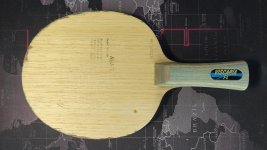Well-Known Member
Thanks NL, I appreciate the explanation.
In short, am I correct in summarising that if I learn to trigger the larger muscle groups in sequence, then the need to over use the smaller ones reduces?
Is there any other, complementary approach that helps, such as actually relaxing the smaller muscles? (lighten grip, ease up on pace of shots etc)
I can visualise what you say for FH, but given the relative lack of larger muscle movement on BH vs relatively higher use of smaller muscles (forearm/wrist) then how do I attack this one when shadow practicing - this is at least as problematic for me as FH as I tend to jab at the ball and use shorter unfinished strokes as a result of being tight.
Yes, there are things that help, but everything takes time. Getting stronger fingers (which most people coincidentally do from gripping TT rackets) helps, as being able to grip the racket with the fingers as opposed to building tension in the arm muscles allows you to relax and whip the racket better.
Wrist flexibility helps, as the whip is the last part of the kinetic change. Don't make the mistake of trying to do too much there other than to be able to increase or reduce the range over which the acceleration happens. Sometimes, it is a relaxed result, but sometimes, you need to actively practice the feel of hammering a nail or whipping a hankerchief or towel to get a feel for the motion.
A relaxed snapping at elbow helps, but it should largely be the relaxed result of stopping your body motion and letting your lower arm go forward into the ball as the angle reduces from straight to almost right (and there are smaller degrees of this).
At a high level, this is a relaxed throwing motion. Look at sports like tennis or golf which have similar motions but may have slightly different technical uses of the body. You might be able to find an athlete you know who you can study and uhderstand and then think about how it would make sense for you.
None of this above is science, it is just to stimulate ideas that may help you get on the right path. The biggest thing is to experiment, take time, get feedback and be patient. You may not get a perfect relaxation (I certainly don't), but my forehand today is lightyears ahead of when I started this in 2015 even with all the deficits it has because of arthritis.











